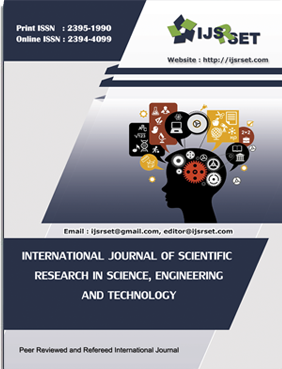Covid-19 Related Sentiment Analysis on Twitter data using Machine Learning based Technologies
Keywords:
COVID-19, Coronavirus, Emotions, Twitter, TweetsAbstract
During the crisis situation caused due to COVID-19 disease, managing mental health and psychological well-being is as important as physical health of people. As web based life is broadly utilized by individuals to communicate their feeling and supposition, our framework utilizes Twitter information posted by individuals during this emergency circumstance to dissect the feelings of individuals. For processing the cleaned data NRC Word-Emotion Association Lexicon (have aka EmoLex) is used. NRC Word-Emotion Association Lexicon is a list of English with real-valued scores of intensity for eight basic emotion words ns (anger, anticipation, disgust, fear, joy, sadness, surprise, and trust). The text content of tweeter dataset created by fetching tweets across the world have classified into basic emotions like anger, anticipation, disgust, fear, joy, sadness, surprise and trust. This analysis can be used by authorities to understand the mental health of the people and can take necessary measures to decide on policies to fight against coronavirus which is affecting the social well-being as well as economy of the whole world.
📊 Article Downloads
References
H. J. Do, C. G. Lim, Y. J. Kim, and H. J. Choi, “Analyzing emotions in twitter during a crisis: A case study of the 2015 Middle East Respiratory Syndrome outbreak in Korea,” 2016 Int. Conf. Big Data Smart Comput. BigComp 2016, pp. 415–418, 2016, doi: 10.1109/BIGCOMP.2016.7425960.
M. A. Tocoglu, O. Ozturkmenoglu, and A. Alpkocak, “Emotion Analysis from Turkish Tweets Using Deep Neural Networks,” IEEE Access, vol. 7, pp. 183061–183069, 2019, doi: 10.1109/ACCESS.2019.2960113.
A. Giachanou and F. Crestani, “Like it or not: A survey of Twitter sentiment analysis methods,” ACM Comput. Surv., vol. 49, no. 2, 2016, doi: 10.1145/2938640.
L. Li et al., “Characterizing the Propagation of Situational Information in Social Media during COVID-19 Epidemic: A Case Study on Weibo,” IEEE Trans. Comput. Soc. Syst., vol. 7, no. 2, pp. 556–562, 2020, doi: 10.1109/TCSS.2020.2980007.
V. Lampos and N. Cristianini, “Tracking the flu pandemic by monitoring the social web,” 2010 2nd Int. Work. Cogn. Inf. Process. CIP2010, pp. 411–416, 2010, doi: 10.1109/CIP.2010.5604088.
R. Kamal, M. A. Shah, C. Maple, M. Masood, A. Wahid, and A. Mehmood, “Emotion classification and crowd source sensing; A lexicon based approach,” IEEE Access, vol. 7, pp. 27124–27134, 2019, doi: 10.1109/ACCESS.2019.2892624.
K. Tago and Q. Jin, “Influence analysis of emotional behaviors and user relationships based on Twitter data,” Tsinghua Sci. Technol., vol. 23, no. 1, pp. 104–113, 2018, doi: 10.26599/TST.2018.9010012.
F. T. Giuntini et al., “How do i feel? Identifying emotional expressions on facebook reactions using clustering mechanism,” IEEE Access, vol. 7, pp. 53909–53921, 2019, doi: 10.1109/ACCESS.2019.2913136.
M. Bouazizi and T. Ohtsuki, “Multi-class sentiment analysis on twitter: Classification performance and challenges,” Big Data Min. Anal., vol. 2, no. 3, pp. 181–194, 2019, doi: 10.26599/bdma.2019.9020002.
H. Achrekar, A. Gandhe, R. Lazarus, S. H. Yu, and B. Liu, “Predicting flu trends using twitter data,” 2011 IEEE Conf.
Downloads
Published
Issue
Section
License
Copyright (c) 2024 International Journal of Scientific Research in Science, Engineering and Technology

This work is licensed under a Creative Commons Attribution 4.0 International License.




